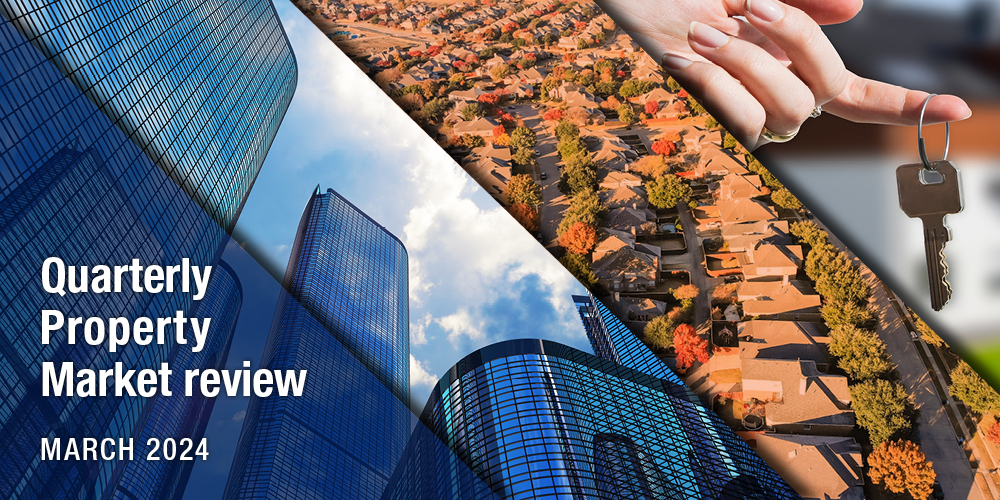Home values across the country have largely settled into positive territory despite interest rates remaining elevated. Perhaps it’s the talk of impending rate cuts and easing inflation that has caused prices to inch up in every capital over the quarter, except for Melbourne and Hobart.
Values gaining momentum
In the three months to February 29, CoreLogic’s Home Value Index (HVI) reported national values had risen by 1.3%. Over the same period, the combined capital cities increased by 1.2% and the combined regions were up by 1.3%.
During the quarter, Perth surged ahead jumping 5.2% in three months taking the 12-month hike in the West Australian capital to an incredible 18.3%.
CoreLogic research director Tim Lawless said ongoing financial challenges haven’t overwhelmingly dampened the Australian demand for bricks and mortar. “Housing values have been more than resilient in the face of high interest rates and cost of living pressures,” he said. “The ongoing rise in housing values reflects a persistent imbalance between supply and demand which varies in magnitude across our cities and regions.”
Home values moving forward
Historically, the major capitals of Sydney and Melbourne do a lot of the heavy lifting when it comes to housing values. Movements in the two cities often spell out how the overall market will continue going forward – give or take any unique activities in other micro markets.
The HVI demonstrated that Melbourne values had just come out of a “three-month slump” to record a modest 0.1% rise in February and in Sydney values returned to positive territory by February after recording declines late last year.
“Potentially we are seeing some early signs of a boost to housing confidence as inflation eases and expectations for a rate cut, or cuts, later this year firm up,” Mr Lawless added.
However, Mr Lawless said multiple factors are holding the domestic housing market back from a “significant rebound”.“Affordability constraints, rising unemployment, a slowdown in the rate of household savings and a cautious lending environment, are all factors likely to keep a lid on value growth over the near term.”
Eleanor Creagh, senior economist at REA Group’s data business PropTrack, was more optimistic in the latest PropTrack Home Price Index. She revealed that several factors were creating a “positive tailwind” for home prices in 2024.“Housing demand is being buoyed by population growth, tight rental markets, resilient labour market conditions and recent home equity gains. Meanwhile, the sharp rise in construction costs and labour and materials shortages have slowed the delivery of new builds, hampering the supply of new housing,” she said. “Looking ahead, the positive tailwinds for housing demand and a slowdown in the completion of new homes are likely to offset the impact of reduced affordability and a slowing economy. As a result, prices are expected to lift further in the months ahead.”
Rents still on the rise
The start of the calendar year has always been a strong period for rental growth and the beginning of 2024 has been no exception. CoreLogic figures show national rental values had risen by 0.9% in February, the highest reading since March 2023. As a result, the rolling quarterly change in rents rose to 2.4%, the highest since May last year.
When pulling back to look at the yearly snapshot, CoreLogic’s national rental index was up from a recent low of 8.1% in October 2023, to 8.5% over the 12 months to February’s close.
Investors might want to take note that the acceleration in rental trends is being driven by houses, rather than units. Annual rental growth in houses has been climbing since October 2023, while unit rents moved in the opposite direction.
Gross rental yields have remained strong in capital city markets, rising slightly on a national level from late 2023 and into early 2024. The subtle rise in rental yields can be attributed to rental rates once again rising at a faster rate than dwelling values since November 2023.
Dwelling values over the quarter
Over the quarter all capitals with the exception of Melbourne and Hobart recorded an increase, with Sydney prices leading the way. Regional markets experienced slightly higher growth than the combined capital cities with an increase of 1.3% over the quarter.
Melbourne
The Victorian capital has once again recorded a median dwelling value below Brisbane at $778,941 – sitting close to the national median of $765,762. The city saw negative growth across the quarter with a -0.6% change in dwelling values, however, this last month figures moved into positive territory, up 0.1%. The annual increase for Melbourne was 4%.
Sydney
Maintaining its place as the country’s most expensive city, quarterly figures show that the Harbour City had a very subtle movement in dwelling values rising only 0.6% to $1.128 million. The annual figure demonstrates a more impressive number having jumped 10.6% in 12 months.
Brisbane
Brisbane’s median home price is now $805,593 after a quarterly increase of 2.9%, but it is a longer term picture that showcases the Queensland capital’s impressive year in property. During the 12 months to February 29, median dwelling prices jumped 15.6%.
Canberra
Sitting in its relatively new position as Australia’s second priciest city for property, Canberra had a quarterly home price movement of just 0.3% taking the current median to $840,103. Over the past year, the nation’s capital rose by 1.6%.
Perth
Often proving to be a city that dances to the beat of its own drum, Perth has leapt streets ahead over other capitals with an annual home value surge of 18.3% to a median of $687,004. It has also been a strong quarter with a local home value growth of 5.2%.
For more information about how you might be able to purchase a property in the current market, get in touch with us today.
|
City |
Houses | Units | Dwellings |
| Melbourne | $942,779 | $607,473 | $778,941 |
| Sydney | $1,395 million | $837,253 | $1.128 million |
| Brisbane | $899,474 | $576,359 | $805,593 |
| Canberra | $967,671 | $586,896 | $840,103 |
| Perth | $718,560 | $482,972 | $687,004 |
Note: all figures in the city snapshots are sourced from: CoreLogic’s national Home Value Index (March 2024)
This advice may not be suitable to you because it contains general advice that has not been tailored to your personal circumstances. Please seek personal financial advice prior to acting on this information. Investment Performance: Past performance is not a reliable guide to future returns as future returns may differ from and be more or less volatile than past returns.

